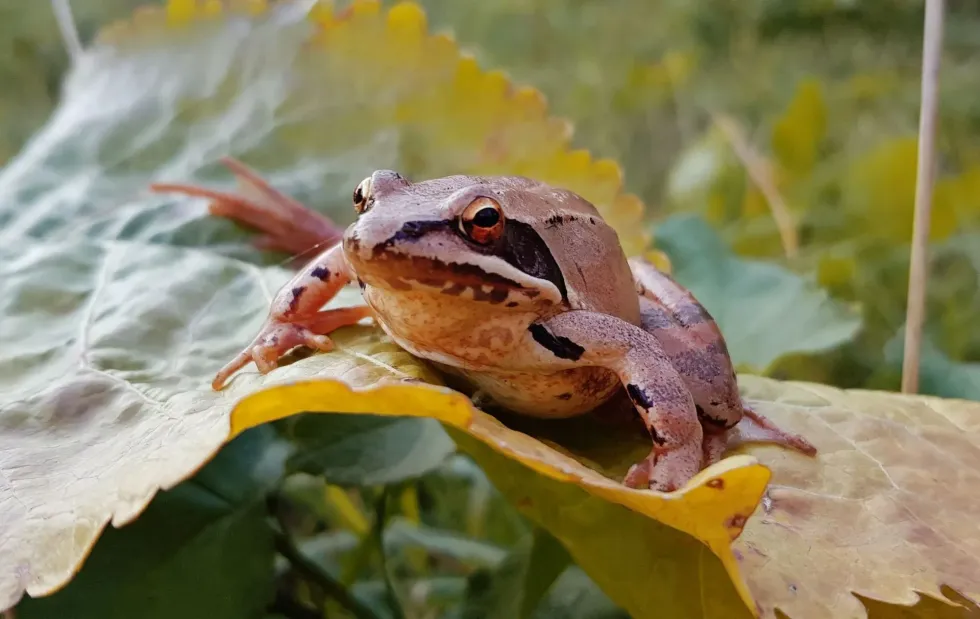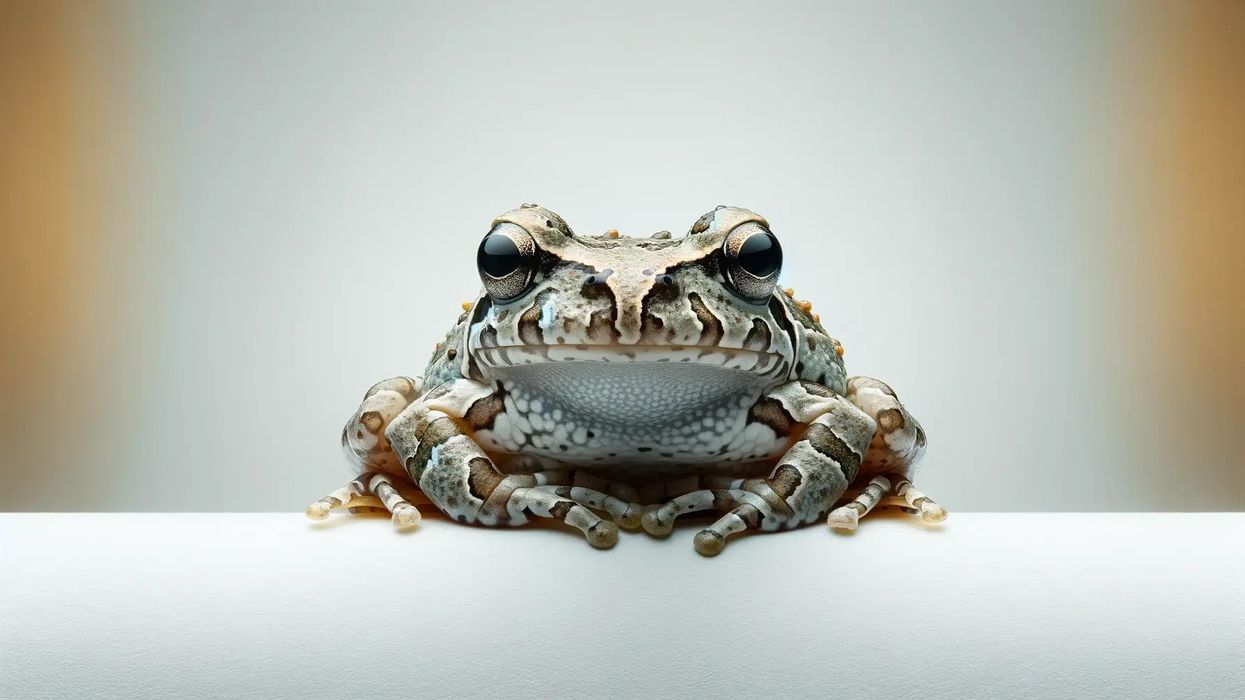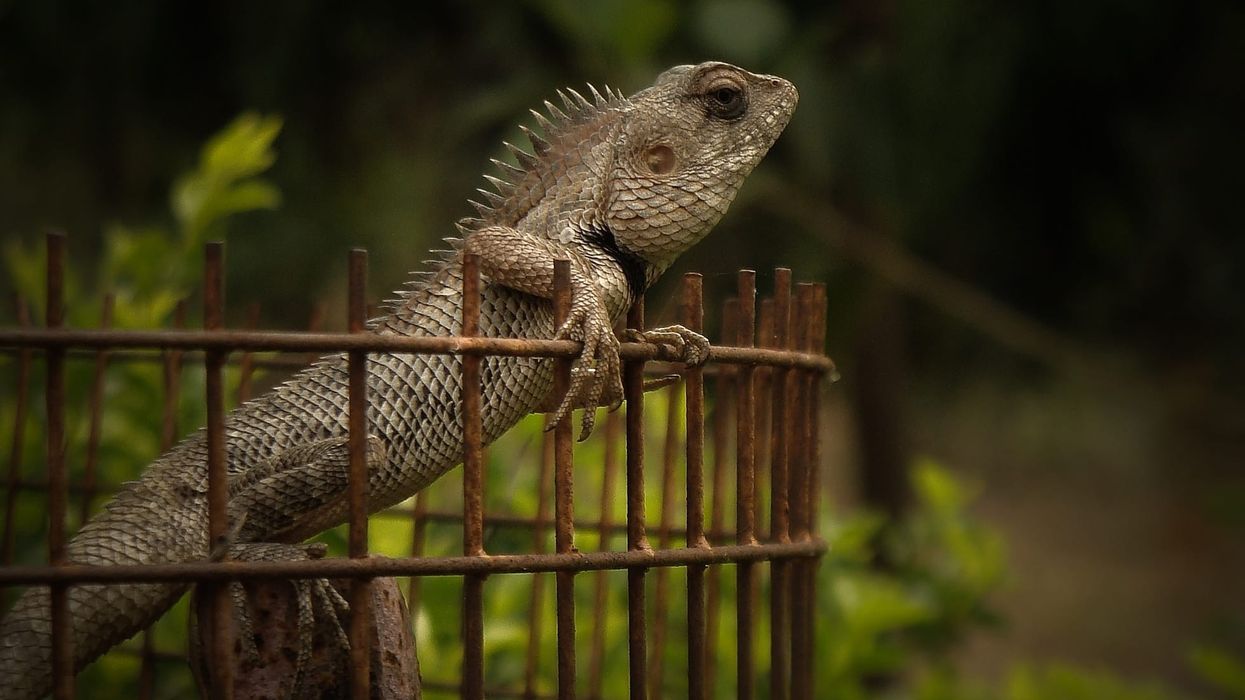Do you like frogs, like poison frogs? Then here we have all the information on agile frogs.
The agile frog (Rana dalmatina) is a species of amphibian that can be found in Europe and Turkey. They have a long, pointed snout, and two conspicuous triangular patches adjacent to their eye, on the sides of their head.
These frogs feed on insects and earthworms, but the tadpoles eat aquatic plants.
Their conservation status is Least Concern, but their population numbers are decreasing due to road mortality, sickness from water pollution, and habitat loss due to conversion of their habitat for agricultural purposes. These frogs are mostly active during the day and early evening and unlike other frogs, the males of the species don't have vocal sacs.
Read on to know about the reproduction, physical description, feeding behavior, and more about agile frogs and if you like this article, then also check out leopard frog and dyeing dart frog.
Agile Frog Interesting Facts
What type of animal is an agile frog?
An agile frog is a species of amphibian, especially a frog.
What class of animal does an agile frog belong to?
The agile frog species belongs to the class Amphibia of animals.
How many agile frogs are there in the world?
The populations of these European amphibians in exact numbers are not known. However, they have been observed to be extremely rare in Spain, uncommon in north Europe, sparsely distributed in Turkey, but pretty common in eastern and central Europe. Their numbers are showing a decreasing trend within their habitat range.
Where does an agile frog live?
The agile frog is found widely distributed in north Turkey and Europe. In Turkey, they inhabit North Anatolia and Turkish Thrace.
In Europe, they are only found in the islands of Denmark, Navarra, Burgos, and Álava provinces of Spain, the island of Jersey of the British Isles, and the southeast coast of Sweden. They are also seen in and around the Transcarpathian Plain of Ukraine in the former Soviet Union. There may also be a population living in Poland.
What is an agile frog's habitat?
These European frogs are thermophilic amphibians that are primarily found in natural habitats, like forest clearings and edges, light and dry deciduous woodlands, and extensive meadows. During the arrival of their time for reproduction, they move to a place or their breeding sites with slow-moving or still water bodies to spawn.
This place can even be far away from their primary habitats.
Who do agile frogs live with?
It's not known whether agile frogs live a social solitary life. Usually, frogs are solitary by nature and only come together upon the arrival of the mating season. We can assume the same behavior from agile frogs as well.
How long does an agile frog live?
These European frogs have been seen to live for about seven years on average.
How do they reproduce?
The breeding season of these frogs occurs around February-April. They mature sexually at about three years of age. Adults come together at their breeding site when the breeding season arrives to spawn.
Breeding sites are usually warm, well-illuminated swamps on forest edges or in the forests. Not much is known about their courtship behavior.
After copulation, the female lays about 450-1800 eggs in clumps. The female lays eggs on or around underwater vegetation around the open parts of the swamp or pond. The eggs hatch and the metamorphosis of tadpoles occurs around late June to early August.
What is their conservation status?
The conservation status of these European frogs according to the International Union for Conservation of Nature is listed as Least Concern. The few main threats to the species are degradation of breeding sites due to conversion into agricultural fields, road mortality during breeding migration, and skin disease due to water pollution.
They are not an endangered species, but the threats they face might lead them to endangerment.
As a part of the protection of their populations, they have been included in Appendix IV of the EU Habitats Directive and Appendix II the Bern Convention. Local actions in Jersey are being taken where a group, Agile Frog Group, are working hard within their local habitat range.
Agile Frog Fun Facts
What do agile frogs look like?
The agile frog is a medium to large-sized frog species. They have a slender brown-colored body. The upper side of these frogs is reddish-brown to brown in color.
The throat and belly of the females are yellow and the males are white. The hind legs are long and have dark horizontal lines on them.
They have a pointed and long snout and a conspicuous round eardrum which is about the same size as their eyes. These frogs can be identified by their visible dark brown triangle-shaped patch that can be seen adjacent to their eyes, on the sides of their head. Males of this species do not have any vocal sacs.

We've been unable to source an image of agile frogs and have used an image of tree frog instead. If you are able to provide us with a royalty-free image of an agile frog, we would be happy to credit you. Please contact us at hello@kidadl.com.
How cute are they?
These frogs may be considered cute by some people. They have also not been seen to be aggressive, surely adding to their charm.
How do they communicate?
Frogs, in general, communicate visually and vocally. Unlike most frogs, male agile frogs do not have vocal sacs, but they can still vocalize. They have been observed to vocalize underwater, so their sound does not carry a very long distance.
How big is an agile frog?
Male adult agile frogs are 2.5 in (6.5 cm) and adult females are 3.5 in (9 cm). They are around the same length as an average tree frog, which is about 0.7-5.5 in (1.9-14) cm in length.
How fast can an agile frog move?
These frogs have long hind legs. These often help them make long jumps, about a distance of 6.6 ft (2 m) at one single leap. This often comes in handy when they are trying to catch prey or run away from predators.
How much does an agile frog weigh?
The exact weight of an agile frog is not known. However, they are a small species, so it can be assumed that they would only weigh a few ounces.
What are the male and female names of the species?
Males and females of this species don't have any specific names.
What would you call a baby agile frog?
A baby agile frog is called a polliwog or tadpole.
What do they eat?
These frogs are omnivorous in nature. The diet of young tadpoles consists of aquatic plants and their debris and waste. The diet of adult frogs consists of earthworms and insects, like beetles or flies.
Are they poisonous?
No, these frogs are not known to be poisonous.
Would they make a good pet?
Not on a regular basis, but agile frogs have been observed to be kept as pets. If you're thinking of keeping a small group of them together, get a vivarium.
You'll have to make space for a small pond if you want to breed them. Keep logs, stones, a small plant, or an aquatic plant in the vivarium for the tadpoles to feed on.
These frogs are thermophilic in nature, so they will be able to tolerate a low temperature of 50 F (10 C) and a high temperature of 104 F (40 C). Basking temperatures should be more than the natural temperatures of the enclosure.
Did you know...
Agile frog females are larger than males.
These frogs go into hibernation around October and emerge around February.
How did agile frogs get their name?
Agile frogs have long hind legs which makes them extremely agile, so they can often take long jumps of about 6.6 ft (2 m) in a single leap. This quality is the reason behind their common name.
What is the difference between an agile frog and a desert frog?
There are many species of frogs that live in the desert.
The Australian desert alone is home to 19 species of frogs. While the natural habitat of the agile frogs is forested, desert frogs have been observed to burrow underground in deserts to escape the sun's heat.
Agile frogs have a fixed breeding season starting around February when they move to a place with a swamp or pond or their breeding sites to spawn or lay clumps of eggs, whereas the breeding season of desert frogs depends entirely on rain in the desert and they lay clumps of eggs in temporary pools.
Here at Kidadl, we have carefully created lots of interesting family-friendly animal facts for everyone to discover! For more relatable content, check out these red-eyed tree frog facts and Pacman frog facts for kids.
You can even occupy yourself at home by coloring in one of our free printable tree frog coloring pages.









